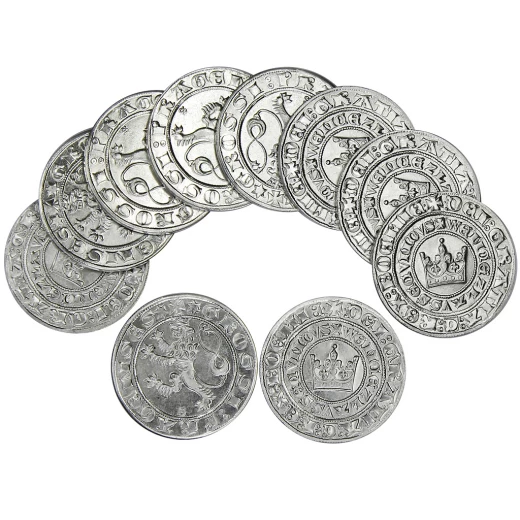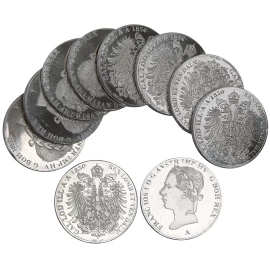Prague Groschen, Wenceslas II., 10 coins
4xThe Prague groschen was a groschen-type silver coin that became very common throughout Medieval Central Europe. It is a silver coin with on the obverse the legend DEI GRATIA REX BOEMIE ("By the grace of God the King of Bohemia") and on the verso GROSSI PRAGENSIS ("Prague groschen"). The weight of the coin varies between 3.5 and 3.7 g with a fineness of 933/1000 of silver. More information...
Prague Groschen, Wenceslas II., 1300-1644, pack of 10 coin replics
The groschen was subdivided into twelve parvus ("small") coins with a Bohemian heraldic lion sign on the obverse.
Minting of this coin started around 1300 after silver mines had been discovered in Kutná Hora during the reign of the Bohemian king Wenceslaus II. King Wenceslaus II invited the Italian lawyer Gozzius of Orvieto to create a mining code Ius regale montanorum which also was partly was a reform of the coinage. This, and the high amount of silver found in Kutná hora resulted in the implementation of Prague groschen. Because of the high amount of silver used in the coin it became one of the most popular of the early Groschen-type coins in medieval Europe.
Specifications of the Prague Groschen
- Weight: 30 g (10 pcs)
- Diameter: 28mm
- Material: Aluminum
- The given price is for 10 pices of coins
We are here for you



.2152382459.1707673919.JPG.webp)
.2152382459.1707674064.JPG.webp)
.2152382459.1707673785.JPG.webp)

.2152382459.1707674009.JPG.webp)
.2152382459.1707674129.JPG.webp)

.2152382459.1703168169.JPG.webp)